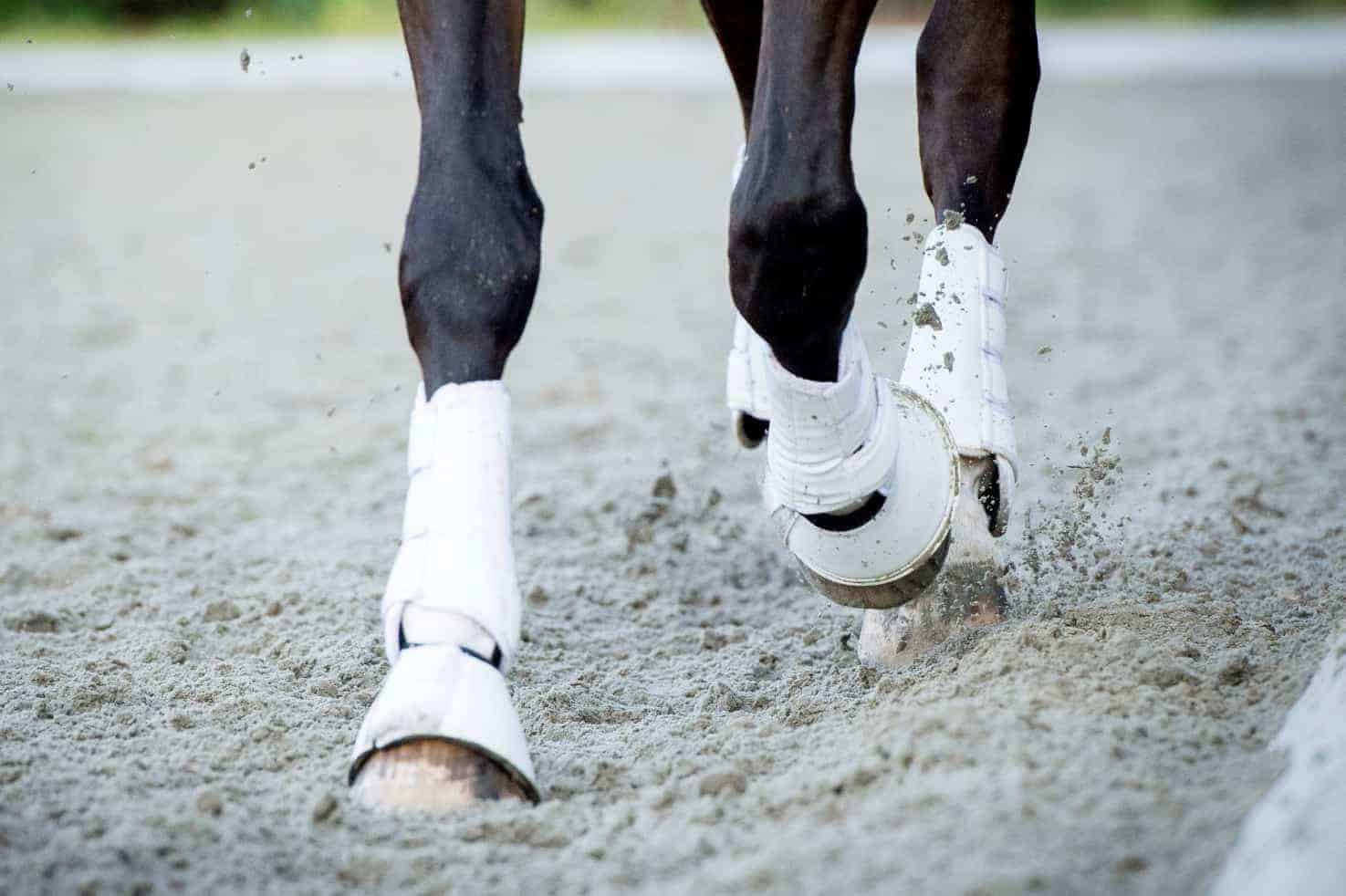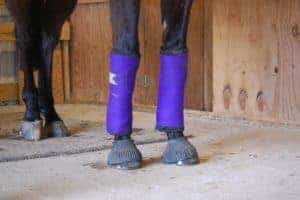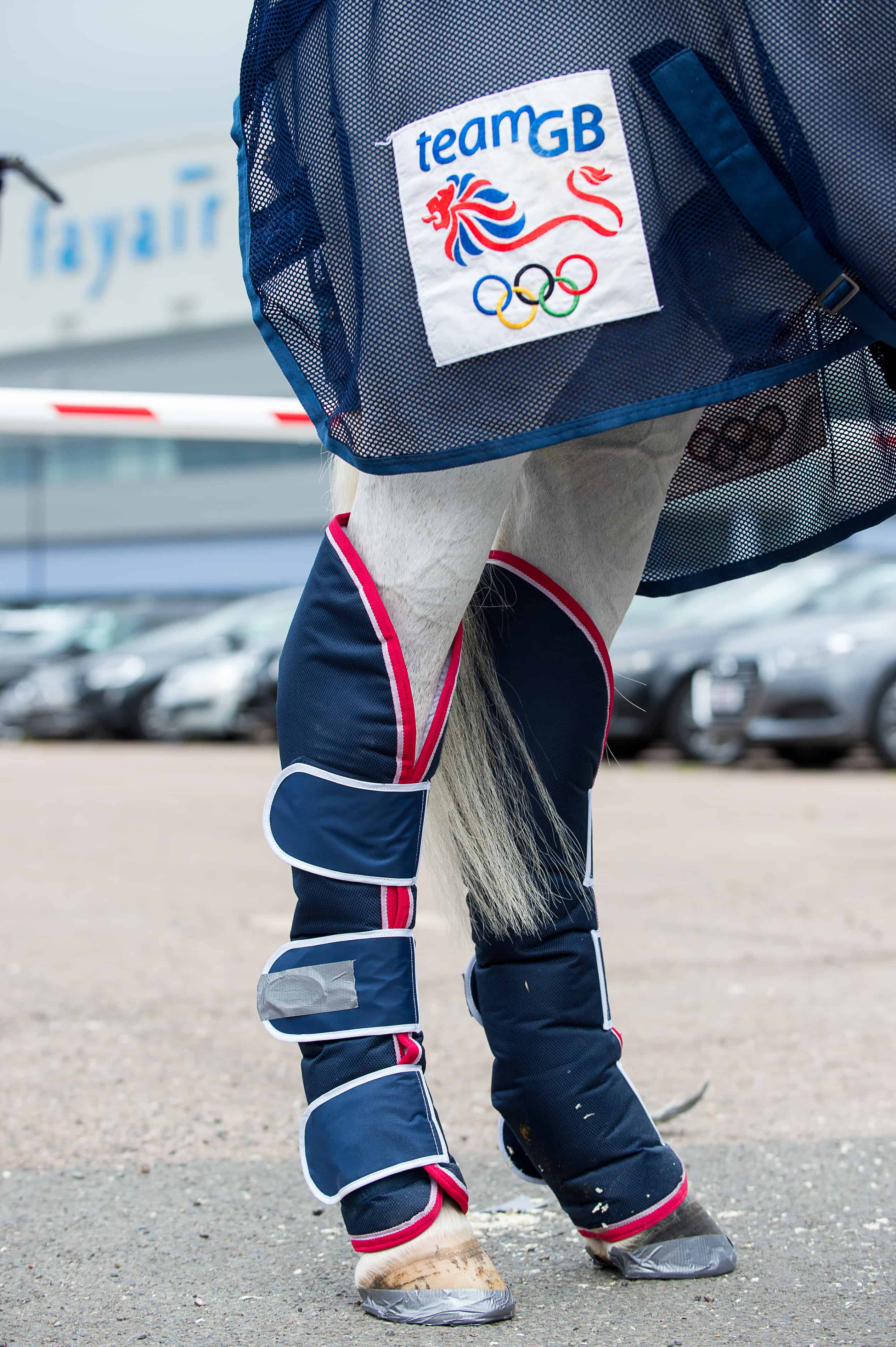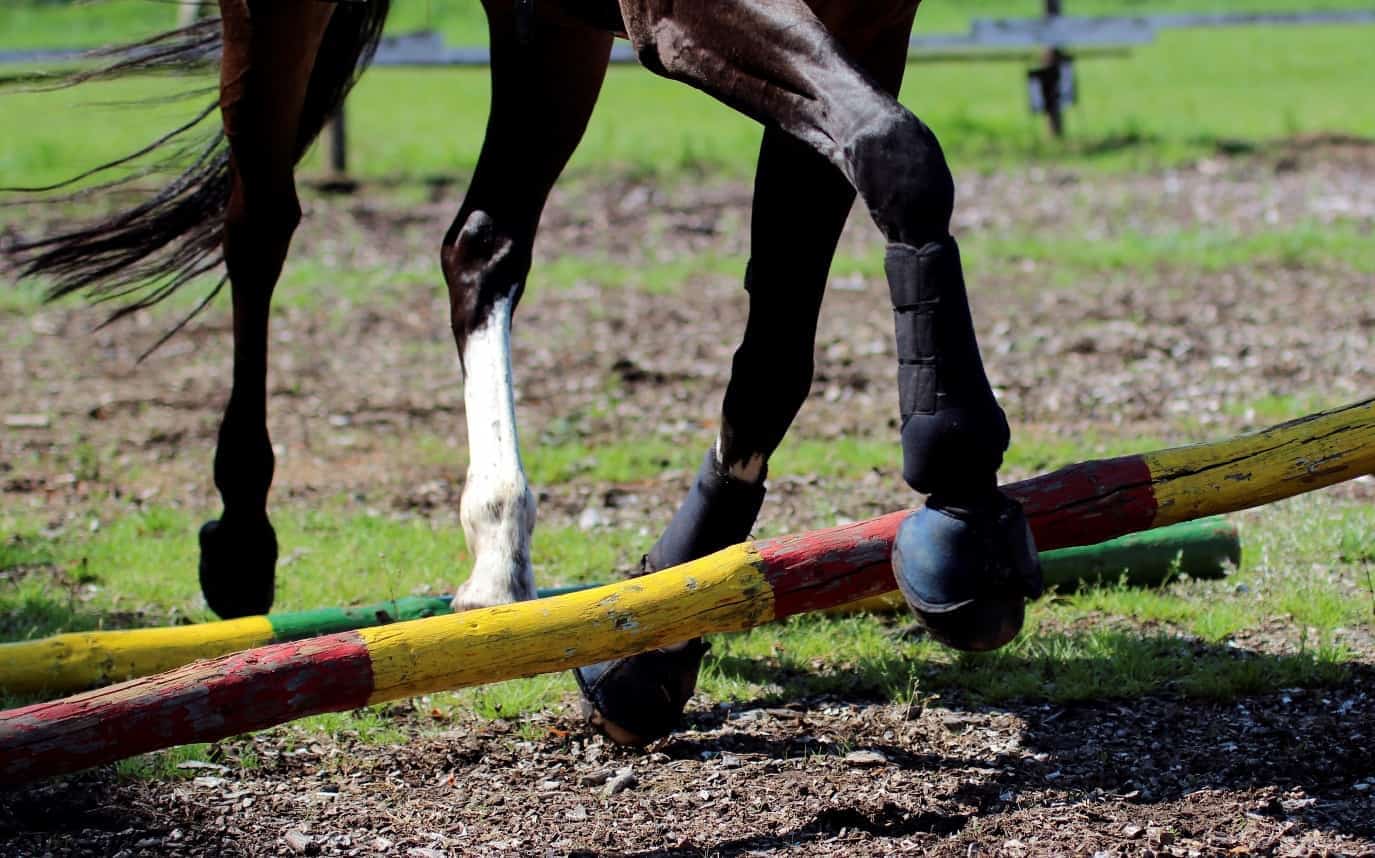The Science Behind Equine Boots and Bandages

What purpose does equine legwear really serve?
Going out for a few jumps in the arena? Buckle on the brushing boots. Heading for a haul in the trailer? Strap on those well-padded, hock-high transport boots. Treating a leg wound? Apply sheet cotton and that brightly colored flexible bandage.
It’s what we’ve seen other people do; it’s what we’ve been taught to do; it’s simply what we know to do. But why exactly do we do it? Of course, the short answer is “protection.” Boots and wraps protect the horse’s limbs. But have you ever asked yourself why or how these dressings protect a horse’s leg—or if they even do? What’s going on under that boot or wrap?
You might be surprised to learn there’s actually very little research about the inner workings of the equine leg when wraps and boots are applied. It’s a growing field that still needs lots of “padding” and extra “layers” of research before we can fully understand it.
But in the meantime, we’ve gone to some of today’s top equine biomechanics researchers to get a better grasp on the science of the wrap and to help us unravel some of its mysteries.
Wrapping Leg Injuries
You know the feeling—when you walk into your horse’s paddock and find the dreaded leg gash. You don’t know how he did it but you do know what to do about it. Bring out the bandages, because nothing says leg wound treatment like good a wrap.
Whether it’s something we’ve learned from experience, from veterinary advice, or from reading about horse care, we know that using padding and bandages to wrap a leg wound is essential first aid. What we might not know, though, is why.
Sure, pressure to any wound will help stop bleeding by encouraging clotting. And a wrap will help protect that wound from contamination. You might also know that wrapping a leg wound can help reduce swelling. In fact, keeping the swelling down could be the most important part of the healing process.
“The equine body’s response to injury in the distal (lower) limb is to swell, which can be protective in some ways (like reducing bleeding immediately after injury) but detrimental if not resolved in the later stages of wound healing,” says Nathan Canada, DVM, MS, Dipl. ACVS, staff surgeon at Texas Equine Hospital, in Bryan.
How does that work? It primarily comes down to a fascinating process of physics, says Canada. “There’s a high-pressure system going through the blood vessels between the heart and the injured area, pumping lots of fluid to that injury,” he says. “But wraps increase the pressure on that injured area from the outside, so that it increases the pressure on the interstitial tissues (those between the cells of structures, in this case beneath the skin) in a way that tries to balance out the (wrap) pressure, so there’s no longer a net force trying to drive the fluid out of the vascular system.”

He likens a leg injury’s tendency to swell to how a garden hose works. “Think of turning on the hose,” he says. “The water’s going to go from high pressure to low pressure areas.”
There’s also a chemical process going on at the cellular level, Canada says. Essentially, injury-induced inflammation affects the proteins in the bloodstream, which then affect the cytokines (inflammatory proteins) and cellular pathways. Those cause the blood vessel barriers to become “leaky,” allowing more fluid to seep into the surrounding tissues.
“By putting on a pressure wrap, we’re applying pressure to the skin, and that pressure is transmitted to the deeper tissues of the body,” he says. “That will ultimately raise the pressure within that interstitial fluid—(which serves as) the communication channel between the blood vessel and the rest of the body—and make it a more equal plane.”
It works so well, in fact, that the pressure even helps reduce swelling and aid healing of tendon injuries. “Anything you put on the outside of the skin is going to transmit that pressure to whatever soft tissues are underneath it,” Canada says. “So that will help with reducing swelling in tendons and ligaments, although the extent of that hasn’t been investigated. But any time you have a tendon injury, one of the first things you should do is give it support by applying some sort of pressure.”
While pressure can be great for leg wounds, the wrong kind of pressure can be detrimental, he cautions. Unevenly distributed pressure—which can come from applying bandages with irregular overlap—can cause pressure peaks that can create direct trauma to the tendon or affect the blood flow to it. This, he says, is a common cause of bowed tendons. Reduce risk by always using padding (e.g., pillow pads) beneath the wrap to help distribute pressure, and keep bandage overlaps as even as possible.

Wrapping for Travel
Going on a road trip? Pull out the transport wraps. Again, we experienced horse people know that putting shipping boots or bandages on our traveling horses is just something you do.
But peer pressure isn’t the reason to wrap a trailered horse. Leg pressure, on the other hand, is.
“There actually is a purpose,” Canada says. “Horses were meant to walk around all day, and the blood flow in their legs is dependent on them moving around. So a horse that’s just standing still for long periods of time can ‘stock up’—meaning they get edema (fluid swelling) within their distal limbs.” That swelling can be painful in some horses and even predispose them to getting scratches (the skin infection also known as pastern dermatitis) because the skin becomes fragile.
Pressure from transport wraps can help prevent stocking up in any immobile horse. In essentially the same scientific phenomenon as we described for wrapping wounds, pressure to the legs helps even out blood pressure to keep fluid from collecting in the lower limbs.
How much pressure is necessary? Researchers haven’t come up with a firm answer yet, says Canada. But interstitial pressure is already very low compared to vascular (blood vessel) pressure. So even light pressure, like you might get from the larger, padded, Velcro-strapped transport boots, could prevent fluid buildup.
Another key reason to apply transport boots and wraps is their protective effect against superficial injuries, he says. If the horse gets bustled around in the rig, he could injure his legs on parts of the trailer, step on himself, or even get kicked. The leg coverings could help reduce the severity of such traumatic injuries.
Brush Boots for Impact Protection
Brush boots (also called support, splint, or tendon boots) are the working boots we put on our horses when we ride them—again, often just believing they’re for protection but without really knowing how they protect. These boots come in different kinds of materials, mainly leather and polyurethane, and have a variety of leg coverage and fastening systems.
There’s been little to no scientific research into any of these boots’ efficacy, say our sources. But experience leads most horse people and veterinarians to prefer their use, as they’re probably helpful and aren’t harmful (if applied correctly).
One thing seems clear about their protective benefits, however: They can shield the legs, and especially the tendons, from impact injuries. As with transport boots, they can provide a cushion against traumatic blows. They have harder surfaces than transport boots, which allows them to distribute stronger forces—which can come from hitting a jump, for example, or from self-inflicted hoof strikes. Large-strided horses sometimes damage their own front tendons by hitting them with their back feet, says Lars Roepstorff, DVM, PhD, professor of equine functional anatomy at the Swedish University of Agricultural Sciences, in Uppsala, and scientific veterinary advisor to the Fédération Equestre Internationale.

The boot takes the impact and diffuses the force across its surface, reducing damaging peak pressures significantly. The horse can come out of traumatic strikes with negligible or no injuries, Roepstorff says.
Boots for Preventing Overuse Injuries?
It’s a commonly held belief that brush boots can support the large tendons running down the back of horses’ lower legs during exercise. Unfortunately, however, that might not be the case. No research has confirmed this and, biomechanically speaking, it’s difficult to explain how that could even work.
“It’s possible (although unlikely) that if the boot really somehow restricts the downward movement of the fetlock, so that it doesn’t overextend when coming down from a jump, for example, you might get some protective benefit to the tendon,” says Canada. “But even then, it would only be the superficial digital flexor tendon (SDFT). I don’t see how the deep digital flexor tendon (DDFT, which runs beneath it) could be affected at all.”
Roepstorff is even more skeptical. “In the SDFT, the DDFT, and the suspensory ligament, you have a combined strain force of more than 1000 kg (more than 2,200 pounds) when the horse is just cantering—and much greater when he’s jumping,” he says. “Those are huge forces. You don’t support that by just putting something around it.”
It might make us feel like we’re doing something preventive for our horses’ tendons by investing in high-quality boots but, in the end, nothing they wear is likely to stop a tendon or ligament injury from happening. “Brush boots can’t protect the horse from getting overuse injuries, only traumatic injuries,” Roepstorff says.
Temperature Effects
For all the good we hope to achieve through applying wraps and boots to our horses, there’s one important effect that has been scientifically tested—and we still don’t really know whether it’s a good thing or a bad thing.
What we do know is that covering the legs with this kind of equipment causes a temperature increase of up to 30%, probably by trapping the heat inside, says Simone Westermann, DrMedVet, of the University of Veterinary Medicine, in Vienna, Austria. Her team’s study results showed that exercising without boots led to very little temperature increase in the legs compared to covered legs.
While boots and wraps might have some tendon-warming benefits on very cold days, the temperature increase could be damaging to tendons in certain situations. “It cannot be excluded that heat development under a tendon boot during strenuous exercise could be detrimental to the tendon cells,” she says.
Roepstorff agrees. “In vitro (in the lab) studies have shown that extreme temperatures (48°C/118.4°F) decrease survival of tendon cells dramatically. At the same time core tendon temperature has been measured to 45°C (113°F) during high-speed locomotion” he says. “They literally start to melt.”
The consequence is that you don’t need much of an increase in temperature to reach the breakdown stage. “The main cause for tendon injuries (is) of course the force, but I think the heating effect of boots and bandages could increase risk as well,” says Roepstorff.
But don’t panic and throw out the boots just yet. More research is needed to determine the exact advantages, if any, and disadvantages. In the meantime, being aware of the science behind boots and wraps, and recognizing that tradition isn’t always right, is a good start.
“We are living with a lot of presumptions about what these things do, but we don’t really know,” Roepstorff says. “And I’m not sure it’s always good. Clinically we do indeed see a number of injuries due to ill-fitted bandages and protection boots.”
Take-Home Message
When it comes to boots and wraps, there’s little exact science behind how they function in horses. However, physics, chemistry, and biomechanics can give us insight into how they probably work. For the most part they seem to be helpful—at least in preventing swelling and traumatic strike injuries. However, more research will lead us to a better understanding of how useful leg wraps and boots are and how we can best take advantage of them to support our horses’ health and welfare.

Written by:
Christa Lesté-Lasserre, MA
Related Articles
Stay on top of the most recent Horse Health news with












